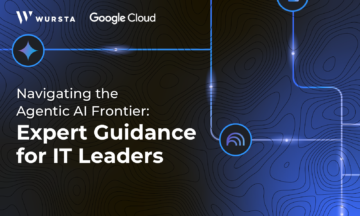Generative AI and Agentic AI: A Beginner’s Guide to the Differences

Artificial intelligence is rapidly evolving, and two terms you’re likely to encounter are “Generative AI” and “Agentic AI.” While both are powerful forces shaping the future, they operate on different principles and have distinct applications. Let’s break down the key differences and explore why understanding them matters.
Generative AI: The Creative Powerhouse
Generative AI, as the name suggests, focuses on creating new content. It learns patterns from existing data and uses that knowledge to generate something novel. Think of it as a digital artist, writer, or composer.
Key Characteristics of Generative AI:
- Content Creation: Excels at producing text, images, audio, video, and even code.
- Data-driven: Relies on vast datasets to learn and generate realistic outputs.
- Pattern Recognition: Identifies and replicates underlying patterns in the data it’s trained on.
- Examples:
- Text generation tools like ChatGPT.
- Image generation models like DALL-E and Stable Diffusion.
- Music composition software.
- Code generation tools.
Agentic AI: The Autonomous Problem Solver
Agentic AI, on the other hand, is about autonomy and decision-making. It’s designed to perceive its environment, make decisions, and take action to achieve specific goals. Imagine it as a digital assistant with the ability to plan and execute tasks.
Key Characteristics of Agentic AI:
- Autonomy: Operates independently, without constant human intervention.
- Goal-Oriented: Focuses on achieving specific objectives.
- Planning and Execution: Develops and carries out plans to reach its goals.
- Environmental Awareness: Perceives and interacts with its surroundings.
- Examples:
- Autonomous driving systems.
- Robotic process automation (RPA) with advanced decision-making.
- Personalized learning platforms that adapt to individual student needs.
- AI-powered customer service agents that can solve complex problems.
The Core Difference: Creation vs. Action
The fundamental difference lies in their primary function:
- Generative AI: Creates something new.
- Agentic AI: Does something to achieve a goal.
Essentially, Generative AI is about the “what” (the output), while Agentic AI is about the “how” (the process).
How They Can Work Together
Generative AI and Agentic AI are not mutually exclusive; they can complement each other to create even more powerful applications. For instance, an Agentic AI could leverage Generative AI to produce personalized content for a marketing campaign. Additionally, a Generative AI could design a virtual environment for an Agentic AI to train in, enhancing its capabilities. Furthermore, an Agentic AI could utilize Generative AI to write code that improves its own functions, showcasing the potential for collaboration between these two types of AI.
Why This Matters
Understanding the distinction between two AI paradigms is crucial for several reasons. Firstly, it informs decision-making by helping individuals and organizations choose the right AI tools that cater to their specific needs. Secondly, it fosters innovation by allowing the exploration of new possibilities by combining the strengths of both approaches. Additionally, recognizing the ethical considerations associated with autonomous AI systems is vital in assessing their potential impacts. Lastly, this understanding aids in future planning, preparing us for the evolving landscape of AI-driven technologies.
As AI advances, the lines between Generative and Agentic AI may become increasingly blurred. However, grasping their core differences will provide a solid foundation for navigating the exciting and transformative world of artificial intelligence. If you would like to learn how your organization can leverage generative or agentic AI, contact us.



